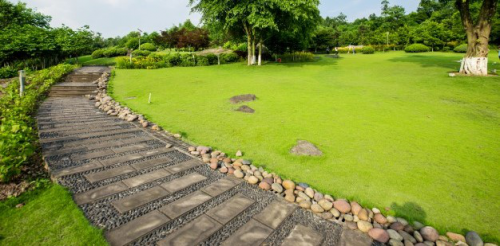Maintain a Weed-Free Garden with Southern Ag Surfactant for HerbicidesA Story by Ubuy SingaporeAnyone who is looking to buy surfactant for herbicide should first know about surfactants, its uses and how it works for herbicides? You can get all that information from this article.
Introduction
 Anyone who is looking to buy surfactant for herbicide should first know about surfactants, its uses and how it works for herbicides? You can get all that information from this article. Surfactants are compounds that help in lowering the surface tension between two liquids, between a gas and a liquid, or between a liquid and a solid. Those surfactants can be used as wetting agents, foaming agents and detergents. The Surfactants get its name from a blend of a surface-active agent. This agent helps in increasing the surface tension. These surfactants are usually known as organic compounds that are amphiphilic in nature means they contain both hydrophobic groups and hydrophilic groups. It is a useful compound that includes both a water-insoluble component and a water-soluble component. That's why a surfactant can diffuse in water and adsorb at the interacting point between water and air or the interface between water and oil. This Surfactant from Southern Ag is a very well known wetting agent that comes as an 80% non-ionic surfactant that helps in increasing the penetration, coverage and is quite effective for almost any herbicide. This Surfactant is suitable with most herbicide sprays like Trimec, Brush Killer, 2,4-D Amine and Atrazine. You should first check the herbicide product label then use this surfactant. This product can help in reducing the surface tension of water to produce a uniform coverage that enables the penetration of herbicides and weed killers. Direction and Application of Southern AG Surfactant For some herbicides given here, like 2,4-D Amine, Trimec, Atrazine, Brush Killer, Image etc you can use 1-2 teaspoons per gallon of water or use 1 pint per 100 gallons. There is another herbicide in which you can add one tablespoon of surfactant per gallon or add 2 quarts per 100 gallons of the spray. There are some specific directions that you can use for some of the herbicides to ensure more uniform coverage by minimising the surface tensions of spray droplets. Given below is a list of directions to use this surfactant. For round-up useYou can use one tablespoonful per gallon. MSMA Herbicides UseIf you are using surfactant for MSMA herbicides then you can use one tablespoonful per gallon. For Common Herbicides useIf you are using this surfactant for some common herbicides then you can use one teaspoonful per gallon. What is Surfactants? Surfactants are known as unique products of the chemical industry. They are used in many industrial areas that include household detergents to food items and pharmaceuticals. As we all know that surfactant is an amphiphilic molecule which contains both hydrophobic and hydrophilic parts. The hydrophobic tail that can be hydrocarbon, siloxane or fluorocarbon. Usually, surfactants are classified based on their polar head. If the head group contains no charge, then surfactant is known as non-ionic. If the head group has +ve or -ve charge on it, then it is known as cationic or anionic. Surfactants that have both positive and negative groups then are known as zwitterionic. How does it work? It is a known fact that surfactants are amphiphilic in nature. That's why they can absorb at the air-water or oil-water interface. They do it by aligning themselves by which the hydrophobic ends are on the air, and the hydrophilic parts are in the water. Let’s understand the use of surfactant according to its types. There are different types of surfactants as given below. Non-ionic surfactantThis surfactant is used in around 45% of industrial production as a wetting agent in the coatings and food ingredients. The following are some examples of nonionic surfactants. Polyoxyethylene surfactants
Anionic SurfactantThis surfactant is used in about 50 percent of the overall industrial production. Some applications of this surfactant are as a laundry detergent, dishwashing liquids, shampoos, etc. The following are some examples of anionic surfactants.
Cationic surfactantThis surfactant is used while combining with a nonionic surfactant to use as softeners in the textiles industry, antistatic additives and so on. Quaternary ammonium salts are an example of Cationic surfactant. Zwitterionic SurfactantIt is a unique surfactant that is very expensive and has an exclusive use in the cosmetic industry. The following are some examples of Zwitterionic surfactants.
Conclusion If you are looking for a great weed free garden at home; then Southern Ag surfactant for herbicides will be a fantastic choice to make. This surfactant works effectively with most of the herbicides available in the market. This product provides an effective distribution to herbicides to give you a weed-free, dream garden. It will help your precious plants to get a weed-free environment to support their proper growth and development. In this article, we have provided some in-depth information about surfactants, which will help you to get a deeper understanding about this product and its benefits. This product from the southern agricultural insecticides, Inc is a fantastic gardening product and is being successfully used globally for effective prevention of weed growth. © 2020 Ubuy Singapore |
Stats
19 Views
Added on October 15, 2020 Last Updated on October 15, 2020 Tags: Nonionic Surfactant, Agricultural Surfactants, weed free garden, Surfactant for Herbicides, gardening product, Southern Ag Surfactant AuthorUbuy Singaporesingapore, SingaporeAboutUbuy is not your usual e-commerce website, we provide our customers with access to an excellent variety of products. more..Writing
|

 Flag Writing
Flag Writing